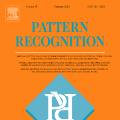Most data in cold-atom experiments comes from images, the analysis of which is limited by our preconceptions of the patterns that could be present in the data. We focus on the well-defined case of detecting dark solitons -- appearing as local density depletions in a BEC -- using a methodology that is extensible to the general task of pattern recognition in images of cold atoms. Studying soliton dynamics over a wide range of parameters requires the analysis of large datasets, making the existing human-inspection-based methodology a significant bottleneck. Here we describe an automated classification and positioning system for identifying localized excitations in atomic Bose-Einstein condensates (BECs) utilizing deep convolutional neural networks to eliminate the need for human image examination. Furthermore, we openly publish our labeled dataset of dark solitons, the first of its kind, for further machine learning research.
翻译:冷原子实验中的大多数数据来自图像,对图像的分析受到我们对数据中可能存在的模式的先入为主的先入为主的印象的限制。我们集中研究在BEC中作为局部密度耗竭而出现的测深沙子的明确界定的案例,采用的方法可以延伸至在冷原子图像中识别模式的一般任务。在一系列广泛的参数上研究隔热动态需要分析大型数据集,使现有基于人类的检查方法成为一大瓶颈。我们在这里描述一个自动分类和定位系统,用以识别原子Bose-Einstein condenstesates(BECs)利用深层革命神经网络的局部引用,从而消除人类图像检查的需要。此外,我们公开公布我们标记的黑沙子数据集,这是它首类的,用于进一步进行机器学习研究。
相关内容
- Today (iOS and OS X): widgets for the Today view of Notification Center
- Share (iOS and OS X): post content to web services or share content with others
- Actions (iOS and OS X): app extensions to view or manipulate inside another app
- Photo Editing (iOS): edit a photo or video in Apple's Photos app with extensions from a third-party apps
- Finder Sync (OS X): remote file storage in the Finder with support for Finder content annotation
- Storage Provider (iOS): an interface between files inside an app and other apps on a user's device
- Custom Keyboard (iOS): system-wide alternative keyboards
Source: iOS 8 Extensions: Apple’s Plan for a Powerful App Ecosystem





